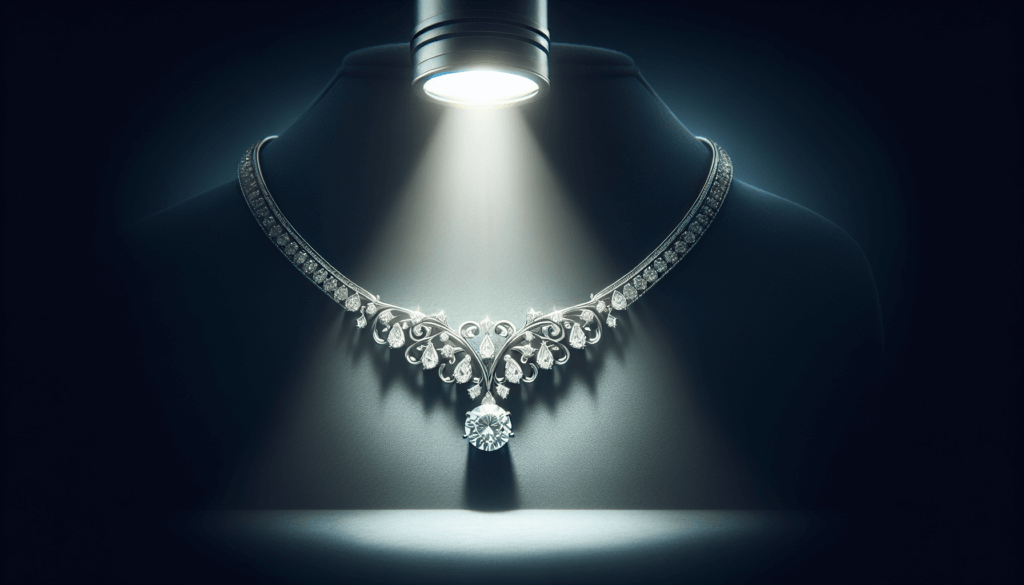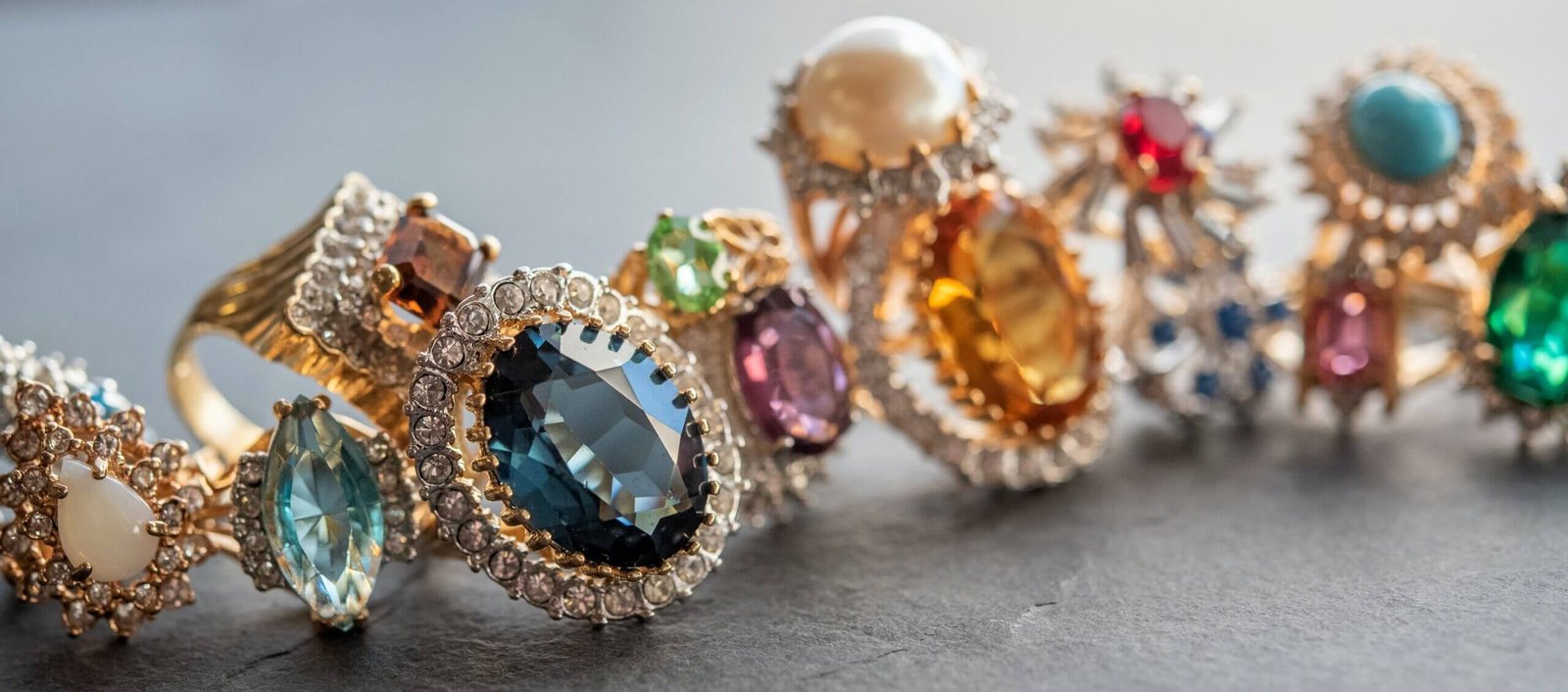Are you looking to invest in jewellery but unsure about which pieces will yield the best returns? Investing in jewellery can be a lucrative endeavor, provided you choose the right pieces. With a myriad of options available, from diamonds to gold to gemstones, it can be overwhelming to determine the best investment. However, by considering factors such as durability, rarity, and historical value, you can make an informed decision that will not only enhance your style but also serve as a wise investment for years to come.

Understanding Jewelry as an Investment
Investing in jewelry, while not a conventional choice, can be a compelling alternative investment option. Besides the aesthetic and sentimental value that jewelry holds, it also possesses the potential for appreciation in value over time. In this article, we will delve into the various types of jewelry available for investment and explore their historical performance, price fluctuations, and the associated risks and rewards.
Analysis of Jewelry as an Alternative Investment
As investors seek to diversify their portfolios beyond traditional assets such as stocks and bonds, the allure of investing in jewelry becomes evident. Jewelry offers a tangible and portable asset that can serve as a hedge against inflation and provide a stable store of value. Additionally, the emotional significance and rarity of certain pieces make them highly desirable, driving up their market value.
Historical Performance of Jewelry
Over the years, jewelry has shown the potential for long-term appreciation in value. Historical data reveals that certain types of jewelry, such as gold and diamonds, have experienced consistent growth. However, it is important to note that the performance of jewelry as an investment might fluctuate based on market trends and economic conditions.
Price Fluctuations in Jewelry Market
The jewelry market is subject to price fluctuations influenced by various factors, including supply and demand dynamics, economic conditions, and shifts in consumer preferences. These fluctuations can be both advantageous and challenging for investors. By closely monitoring market trends and being aware of the factors that impact prices, investors can make informed decisions to maximize their returns.
Risks and Rewards Associated with Jewelry Investment
Investing in jewelry, like any other investment, comes with its own set of risks and rewards. While jewelry can appreciate in value, there are certain risks associated with market volatility, liquidity constraints, and the potential for counterfeits. It is essential for investors to carefully consider these factors and conduct thorough research before entering the jewelry investment market.
Various Types of Jewelry
When considering jewelry as an investment option, it is crucial to understand the different types of jewelry available. Each type possesses unique characteristics that can influence its desirability, value, and potential for appreciation. Let’s explore the various types of jewelry commonly considered for investment purposes.
Exploration into Gold Jewelry
Gold has long been revered as a store of value and a symbol of wealth. Investing in gold jewelry offers a tangible and aesthetically pleasing way to hold this precious metal. The appeal of gold lies in its limited supply, universal desirability, and intrinsic value. Gold jewelry can act as a reliable hedge against inflation and economic uncertainties.
Explanation of Silver Jewelry
Silver jewelry, often overshadowed by gold, has its own investment potential. Silver is a more affordable precious metal, making it accessible to a broader range of investors. Like gold, silver can serve as a hedge against inflation and economic volatility. Its increasing industrial and technological applications further contribute to its appeal as a potentially lucrative investment.
Discussion on Platinum Jewelry
Platinum, known for its rarity and durability, offers a unique investment proposition. Its scarcity and high melting point make it a sought-after metal, especially in the jewelry industry. Platinum jewelry holds both aesthetic and investment value, with limited supply and growing demand driving its potential for appreciation.
Diamond and Other Gemstone Jewelry
Diamonds and gemstones, renowned for their beauty and rarity, have captivated human fascination for centuries. These precious stones, when incorporated into jewelry, can significantly enhance its value. Investing in diamond and gemstone jewelry requires a thorough understanding of grading standards, market trends, and authenticity verification methods.
Pearl Jewelry and its Potential as an Investment
Pearls, often prized for their elegance and timeless beauty, are gradually gaining recognition as an investment-worthy asset. Natural pearls, particularly those of high quality, rarity, and historical value, can appreciate significantly over time. The increasing scarcity of natural pearls further contributes to their investment allure.

Gold Jewelry as an Investment
Gold jewelry holds a prominent position in the world of jewelry investments. Let’s explore the specific aspects that make gold jewelry a compelling investment choice.
Reasons for Investing in Gold Jewelry
There are several reasons why investing in gold jewelry can be advantageous. Firstly, gold has a long-standing reputation as a safe haven asset, offering protection against economic downturns and inflation. Additionally, gold jewelry possesses aesthetic appeal, making it an enjoyable investment that can be worn and displayed.
Price Dynamics of Gold Jewelry
The price of gold jewelry is influenced by a combination of factors, including the current market price of gold, craftsmanship, and design. Investors should closely monitor fluctuations in the price of gold to make informed buying and selling decisions. Understanding the relationship between gold prices and jewelry value is crucial for maximizing returns.
Gold Jewelry Purity and Weight Considerations
When purchasing gold jewelry for investment purposes, it is important to consider its purity and weight. The purity of gold is measured in karats, with 24 karat gold being the purest. Investors often opt for higher karat gold, as it contains a higher percentage of pure gold. The weight of the jewelry also contributes to its value, as gold is priced by weight.
Buying and Storing Gold Jewelry
Investors should exercise caution when buying gold jewelry and ensure that they are dealing with reputable sellers. It is advisable to have the jewelry appraised and authenticated before making a purchase. Proper storage is essential to maintain the value and condition of gold jewelry. Storing it in a secure location, such as a safe or a bank safe deposit box, can minimize the risk of theft or damage.
Silver Jewelry as an Investment
Silver jewelry offers a distinct investment opportunity that can appeal to a wide range of investors. Let’s explore why investing in silver jewelry can be a viable option.
Why Invest in Silver Jewelry
Investing in silver jewelry presents several advantages. Firstly, silver is more affordable compared to gold, allowing investors with a modest budget to enter the precious metals market. Secondly, silver has various industrial applications, thereby creating additional demand and potential for price appreciation. Lastly, as a tangible asset, silver jewelry provides a sense of ownership and aesthetic pleasure.
Silver Jewelry Pricing and Market
The price of silver jewelry is influenced by the current market price of silver, craftsmanship, and design intricacy. As with any investment, investors should closely monitor the price of silver to identify favorable buying opportunities. Timing the market and understanding price trends can enhance the potential returns on silver jewelry investments.
Purity Measures and Precautions
Silver jewelry is typically made from sterling silver, which contains 92.5% pure silver. Verifying the authenticity and purity of silver jewelry is crucial, as counterfeit pieces may affect the investment value. Authenticating the jewelry through professional appraisal services is recommended. Investors should also be mindful of potential tarnishing and take appropriate measures to prevent it.
Proper Storage of Silver Jewelry
Proper storage is vital to maintain the quality and condition of silver jewelry. Silver tarnishes when exposed to air and certain substances. To prevent tarnishing, silver jewelry should be stored in airtight containers, free of moisture and sulfur. Regular cleaning and polishing can help retain the luster and visual appeal of silver jewelry.

Platinum Jewelry as an Investment
Platinum jewelry holds a unique place in the realm of luxury investments. Let’s delve into the value proposition of platinum jewelry and the considerations involved in investing in this precious metal.
The Value Proposition of Platinum Jewelry
Platinum, often referred to as “white gold,” boasts a distinct appeal due to its rarity, durability, and stunning brilliance. Investing in platinum jewelry allows investors to hold a precious metal that possesses intrinsic value and aesthetic allure. The limited supply of platinum, along with its increasing industrial applications, indicates potential appreciation in value over time.
Price Standards of Platinum Pieces
The price of platinum jewelry is determined by various factors, including the current market price of platinum, craftsmanship, and design intricacy. Investors should closely monitor platinum prices and analyze market trends to identify favorable buying opportunities. Understanding the relationship between platinum prices and jewelry value is key to making informed investment decisions.
Assessing Platinum’s Purity for Investment
Platinum jewelry is usually marked with a purity stamp indicating the percentage of pure platinum it contains. The most common purity level is 95% or 950 parts per thousand platinum. Authenticating the purity of platinum jewelry is crucial to ensure its investment value. Professional appraisers and reputable jewelers can assist in verifying the authenticity and quality of platinum pieces.
Securing and Maintaining Platinum Jewelry
Given the value and desirability of platinum jewelry, proper security measures are essential. Storing platinum jewelry in a secure environment, such as a safe or a bank safe deposit box, can minimize the risk of theft or damage. Regular cleaning and maintenance can help retain the shine and allure of platinum jewelry, ensuring its long-term investment value.
Diamonds and Gemstones as an Investment
Diamonds and gemstones, renowned for their beauty and rarity, offer an intriguing investment opportunity. Let’s explore why these precious stones deserve consideration in a diversified jewelry investment portfolio.
Why Consider Diamonds and Gemstones
Investing in diamonds and gemstones allows investors to capitalize on the enduring allure and value of these unique creations. These precious stones possess intrinsic beauty and rarity, making them highly sought after by collectors and enthusiasts worldwide. The increasing global demand for diamonds and gemstones, along with their timeless appeal, contributes to their potential appreciation in value.
Gemstone and Diamond Prices
The prices of gemstones and diamonds are influenced by a range of factors, including the characteristics of the stone (such as color, cut, clarity, and carat weight), market demand, and rarity. Investors should familiarize themselves with the gemstone and diamond market, staying attuned to price trends and factors that drive value appreciation.
How to Understand Gemstone and Diamond Grading
Understanding gemstone and diamond grading is crucial for investors to make informed investment decisions. Grading standards, such as the 4Cs (color, cut, clarity, and carat weight) for diamonds, provide a standardized approach to evaluating and valuing these precious stones. Engaging with certified gemologists and appraisers can assist investors in understanding the quality and investment potential of gemstone and diamond jewelry.
Tips for Buying and Storing Diamonds and Gemstones
When investing in diamonds and gemstones, it is advisable to purchase from reputable and certified sources to ensure authenticity and quality. Professional appraisals and gemstone certifications provide crucial documentation for investment purposes. To maintain the value and condition of diamond and gemstone jewelry, appropriate storage is essential. Storing them in secure locations and regularly cleaning them with care can enhance their longevity and investment value.

Pearls as an Investment
Pearls, with their timeless elegance and natural beauty, offer a unique investment opportunity. Let’s explore the potential of investing in pearls and the factors to consider.
Investing in Pearls
Investing in pearls allows individuals to hold a natural gem with a rich history and captivating allure. While pearls may not traditionally be viewed as a financial investment, certain types of pearls, such as natural pearls of exceptional quality and rarity, have garnered substantial market appreciation over time. The increasing scarcity of natural pearls further contributes to their investment potential.
Price Indicators for Pearls
The value of pearls is influenced by various factors, including size, shape, color, luster, surface quality, and origin. These factors contribute to a pearl’s desirability and market price. Investors should be familiar with pearl grading standards and market trends to identify pearls with investment potential. Consulting with reputable jewelers and pearl experts can assist in making informed investment decisions.
Pearl Grading and Valuation
Pearls are graded based on their luster, surface quality, shape, size, and color. The combination of these characteristics determines a pearl’s grading and subsequent valuation. For investment purposes, pearls with exceptional grading and rarity hold the most potential for appreciation. Engaging with professional pearl appraisers can ensure accurate valuation and assist in identifying investment-worthy pearls.
Caring for and Storing Pearls
Pearls require special care to maintain their luster and condition. Exposure to substances such as perfume, sweat, and chemicals can diminish the quality of pearls. Proper storage involves keeping pearls away from extreme temperatures and avoiding contact with other jewelry that may scratch their delicate surfaces. Regular cleaning and restringing can help preserve the value and longevity of pearl jewelry as an investment.
Investing in Antique or Vintage Jewelry
Investing in antique or vintage jewelry provides a unique opportunity to combine the allure of historical craftsmanship with the potential for appreciation in value. Let’s explore the advantages and considerations involved in investing in antique or vintage pieces.
Why Consider Antique or Vintage Jewelry
Antique and vintage jewelry possesses an inherent charm and historical significance that sets it apart from contemporary pieces. Investing in antique or vintage jewelry allows individuals to acquire wearable pieces of art and craftsmanship that embody rich cultural heritage. The rarity of certain antique or vintage pieces, along with the demand from collectors and enthusiasts, contributes to their investment appeal.
Understanding Antique and Vintage Jewelry Valuation
Valuing antique or vintage jewelry involves considering factors such as age, craftsmanship, materials used, historical significance, brand reputation, and condition. The market for antique or vintage jewelry is influenced by trends, preferences, and the availability of specific pieces. Engaging with antique jewelry experts and appraisers can provide valuable insights into the valuation and investment potential of these unique pieces.
Proper Care and Maintenance of Antique or Vintage Pieces
Antique or vintage jewelry requires special care to preserve its historical integrity and investment value. Proper storage, cleaning, and maintenance are vital to avoid deterioration and damage. Investing in protective storage options and periodic inspections by knowledgeable professionals can ensure the long-term appreciation and condition of antique or vintage jewelry investments.
Navigating the Antique or Vintage Jewelry Marketplace
Navigating the antique or vintage jewelry marketplace requires diligence and research. Attending reputable auctions, visiting established antique jewelry stores and galleries, and participating in online platforms specializing in antique or vintage jewelry can provide access to a range of investment-worthy pieces. Consulting with experienced collectors and dealers can enhance an investor’s understanding of the marketplace and facilitate successful investment decisions.

Role of a Jewelry Appraiser
Engaging the services of a professional jewelry appraiser is essential when investing in jewelry. Let’s explore the significance of appraisal services and the factors to consider when selecting a reputable jewelry appraiser.
Understanding Appraisal Services
Jewelry appraisers play a critical role in assessing the value, authenticity, and condition of jewelry. Their expertise and industry knowledge contribute to accurate and unbiased evaluations. Appraisals are essential to determine the investment potential of jewelry, establish insurance coverage, facilitate estate planning, and ensure fair transactions.
Significance of Professional Appraisals for Investment Pieces
Obtaining professional appraisals for investment jewelry pieces is crucial for several reasons. Appraisals provide documented evidence of authenticity and quality, ensuring informed investment decisions. They also serve as a basis for insurance coverage, helping investors protect their valuable assets. Reputable appraisals facilitate fair transactions, whether buying, selling, or passing down jewelry as part of an estate plan.
Selecting a Reputable Jewelry Appraiser
Choosing a reputable jewelry appraiser requires careful consideration. Look for appraisers with recognized credentials, such as certifications from reputable gemological institutions. Seek recommendations from trusted sources, including jewelers, collectors, and industry professionals. Ensure that the appraiser specializes in the specific type of jewelry being appraised, as expertise in specific materials and styles is vital for accurate evaluations.
Conclusion: Choosing the Right Jewelry Investment
Investing in jewelry can be a rewarding venture, provided that investors understand the characteristics, potential value appreciation, and associated risks of each type of jewelry. Factors such as financial planning, due diligence, market research, and engaging professional appraisers contribute to successful jewelry investments. By carefully considering these factors and diversifying their portfolios, investors can enjoy the aesthetic pleasure and financial rewards that jewelry investment has to offer.
Word count: 2206 words



